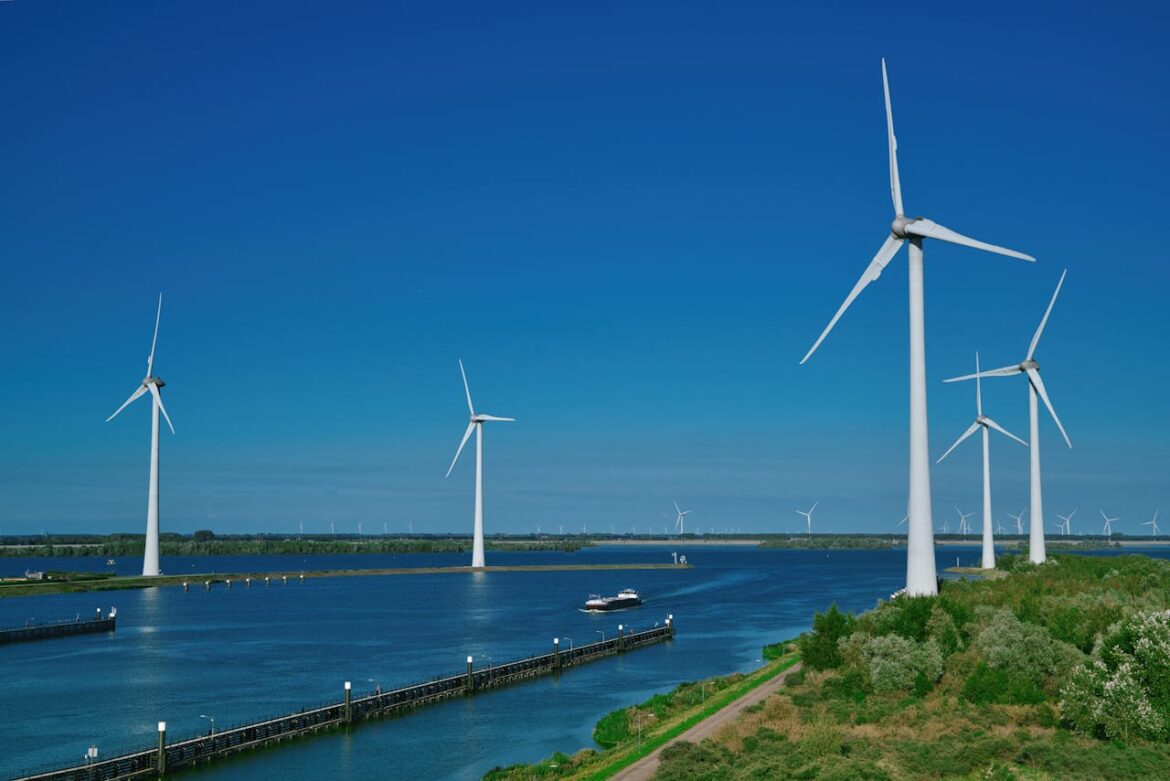U.S. Renewable Energy Industry Advances Floating Offshore Wind Farms
August 2024 – The U.S. renewable energy sector is on the forefront of innovation with the advancements in floating offshore wind farms. This emerging technology enables the development of wind energy in deeper waters, thus unlocking substantial resources that are essential to meet the nation’s clean energy goals. As the need for sustainable energy becomes increasingly critical, floating wind farms represent a significant step forward in harnessing the power of wind to reduce greenhouse gas emissions and drive the transition towards renewable energy sources.
What Are Floating Wind Farms?
Floating wind farms are unique in that they utilize turbines mounted on buoyant platforms that are anchored to the seabed. Unlike traditional fixed-bottom wind farms that are restricted to shallow waters, floating wind technology allows for the installation of wind turbines in deeper oceanic areas. This is particularly important as deeper waters often host stronger and more consistent winds, making them ideal locations for generating renewable energy. “Floating wind is opening up vast new energy opportunities,” asserts Lisa Green, an energy policy expert. “It’s key to achieving net-zero targets.”
Key Projects in the U.S.
Several states are leading the way in the implementation of floating wind farms. In California, the state is launching pilot projects aimed at leveraging its extensive deep coastal waters. The California project exemplifies the state’s commitment to renewable energy and its willingness to embrace innovative technologies. Additionally, Maine is currently running a small-scale project in the Gulf of Maine that serves as a demonstration of the technical feasibility and environmental benefits of floating wind technology. On a federal level, the Biden administration is providing significant support through grants and lease auctions designed to expedite the development of floating wind initiatives across the country.
Benefits of Floating Wind Farms
One of the major advantages of floating wind farms is their ability to access powerful and consistent wind currents commonly found in deeper waters. This translates to increased energy output and efficiency compared to traditional offshore wind farms. Additionally, floating wind platforms are designed to have a reduced visual impact from shore, which can help mitigate potential opposition from coastal communities concerned about the aesthetics of wind turbines. Moreover, these installations tend to have lower conflicts with fishing and shipping activities, making them a more harmonious fit within existing maritime industries.
Challenges Facing the Industry
Despite the promising nature of floating wind technology, there are still several challenges and costs that need to be addressed. High installation and operational costs represent significant barriers to the rapid expansion of floating wind farms. The technological complexity associated with the design and construction of floating platforms is another hurdle that the industry must navigate. However, it is important to note that ongoing innovations in materials, technologies, and engineering design are helping to reduce these financial challenges and ultimately make floating wind a more viable option for large-scale energy production.
2024: A Breakthrough Year for Offshore Wind
As floating wind farms continue to expand throughout the United States, many industry experts are optimistic that 2024 could be a pivotal year for offshore wind energy development. With federal support and state initiatives aligning toward this sustainable energy goal, it is anticipated that the number of floating wind projects will significantly increase. This momentum not only aids in fulfilling clean energy targets but also contributes to job creation in the renewable energy sector, fostering economic growth in coastal regions.
Conclusion
The advancement of floating offshore wind farms marks a significant milestone in the quest for renewable energy solutions. By harnessing the power of the wind in deeper waters, the U.S. is positioning itself to meet ambitious climate goals while also fueling economic growth. As this technology continues to evolve, addressing challenges related to costs and installation will be crucial in realizing the full potential of floating wind farms. As public awareness and federal support burgeon, the future of wind energy appears brighter than ever.
FAQs
What are the main advantages of floating wind farms compared to traditional offshore wind farms?
Floating wind farms can be installed in deeper waters where winds are stronger and more consistent. They also have reduced visual impact and lower conflicts with maritime activities such as fishing and shipping.
How does the U.S. government support floating offshore wind development?
The U.S. government, particularly under the Biden administration, offers grants and conducts lease auctions to incentivize and accelerate the development of floating wind projects.
What challenges do floating wind farms face in their development?
The primary challenges include high installation costs, technological complexities, and the need for ongoing innovations to reduce these barriers.
Why is 2024 considered a critical year for offshore wind energy in the U.S.?
2024 is viewed as a breakthrough year due to the expected increase in the number of floating wind projects, bolstered by federal support and state initiatives aimed at expanding renewable energy production.
What are the environmental benefits of floating wind farms?
Floating wind farms can help reduce greenhouse gas emissions, contribute to clean energy goals, and lessen environmental impacts on coastal areas compared to traditional installations.

